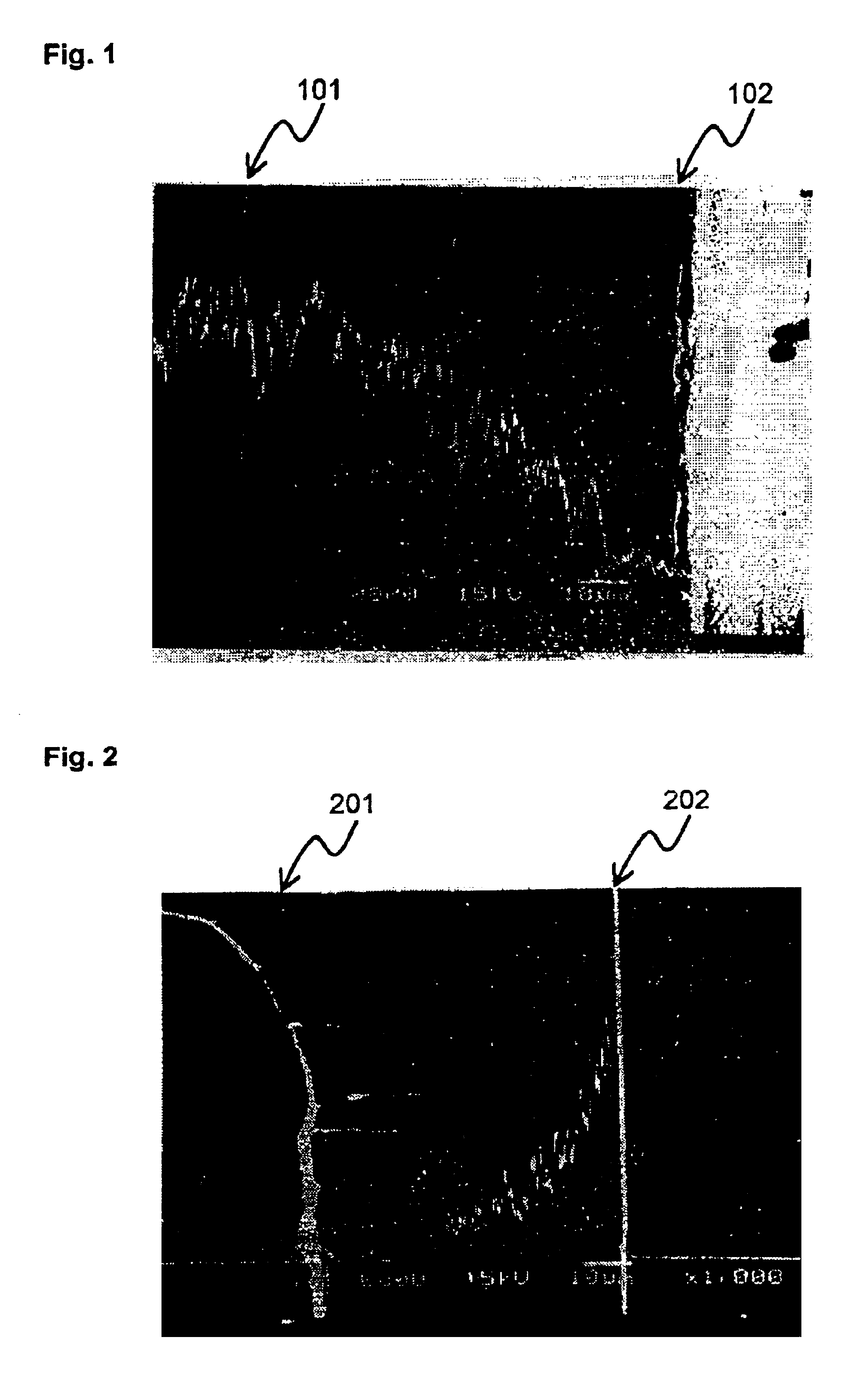Organic-inorganic hybrid polymer materials with compositional gradient, and processes for preparing the same
- Summary
- Abstract
- Description
- Claims
- Application Information
AI Technical Summary
Benefits of technology
Problems solved by technology
Method used
Image
Examples
preparation example 1
[0095]70.0 g of polycarbonate diol (PC diol) having a number average molecular weight of 6600, and a hydroxyl group equivalent of 1.6 was dissolved into 500 mL of chloroform. To the solution was added 7.9 g of 3-isocyanatopropyltriethoxysilane (IPTES), heated with refluxing for 15 hours, and cooled to room temperature. The reaction mixture was dropwise added to 7 L of methanol to precipitate the reaction product. The precipitated substance was filtered off, washed with methanol, and dried in vacuo (97% yield).
[0096]1H-NMR spectrum showed that the reaction product was alkoxysilylated polycarbonate in which an alkoxysilyl group is introduced at the both ends of the polycarbonate (PCS). The alkoxysilyl group equivalent of the reaction product was 1.6. The number average molecular weight of the reaction product was determined to be 7500 by GPC measurement.
[0097]The detailed conditions for determining the molecular weight are as follows.
[0098]
ApparatusModel HLC8020 made by Tosoh Corp.Col...
preparation example 2
[0099]70.0 g of PC diol having a number average molecular weight of 3900, and a hydroxyl group equivalent of 1.8 was dissolved into 500 mL of chloroform. To the solution was added 13.3 g of IPTES, heated with refluxing for 10 hours, and cooled to room temperature. The reaction mixture was dropwise added to 7 L of methanol to precipitate the reaction product. The precipitated substance was filtered off, washed with methanol, and dried in vacuo (97% yield).
[0100]1H-NMR spectrum showed that the reaction product was alkoxysilylated polycarbonate in which an alkoxysilyl group is introduced at the both ends of the polycarbonate (PCS). The alkoxysilyl group equivalent of the reaction product was 1.8. The number average molecular weight of the reaction product was determined to be 4400 by GPC measurement.
preparation example 3
[0101]17.5 g of polyphenylene ether diol having a number average molecular weight of 3500, and a hydroxyl group equivalent of 2.0 was dissolved into 200 mL of chloroform. To the solution was added 4.8 g of IPTES, heated with refluxing for 10 hours, and cooled to room temperature. The reaction mixture was dropwise added to 2 L of methanol to precipitate the reaction product. The precipitated substance was filtered off, washed with methanol, and dried in vacuo (95% yield).
[0102]1H-NMR spectrum showed that the reaction product was alkoxysilylated polyphenylene ether in which an alkoxysilyl group is introduced at the both ends of the polyphenylene ether (PPS). The alkoxysilyl group equivalent of the reaction product was 2.0. The number average molecular weight of the reaction product was determined to be 4300 by GPC measurement.
PUM
| Property | Measurement | Unit |
|---|---|---|
| Temperature | aaaaa | aaaaa |
| Temperature | aaaaa | aaaaa |
| Volume | aaaaa | aaaaa |
Abstract
Description
Claims
Application Information
 Login to View More
Login to View More - R&D
- Intellectual Property
- Life Sciences
- Materials
- Tech Scout
- Unparalleled Data Quality
- Higher Quality Content
- 60% Fewer Hallucinations
Browse by: Latest US Patents, China's latest patents, Technical Efficacy Thesaurus, Application Domain, Technology Topic, Popular Technical Reports.
© 2025 PatSnap. All rights reserved.Legal|Privacy policy|Modern Slavery Act Transparency Statement|Sitemap|About US| Contact US: help@patsnap.com


